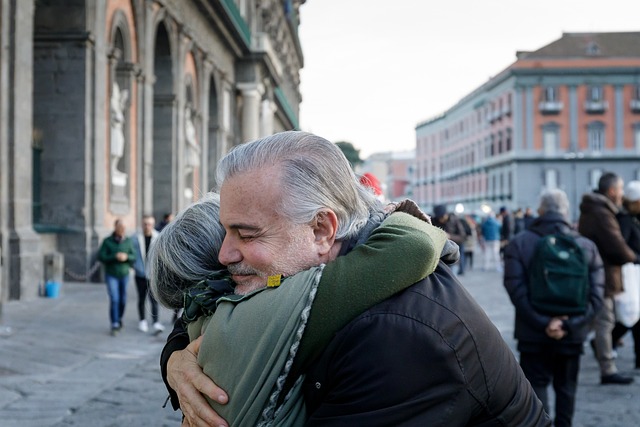
The Healing Embrace: How Hugs Relieve Stress
In a fast-paced world filled with daily challenges and anxieties, humans have long sought solace in the simplest yet most profound of gestures: the hug. A hug, often described as a silent language of love and care, not only connects individuals on an emotional level but also possesses remarkable stress-relieving qualities. This article delves into the science and psychology behind how hugs relieve stress, exploring the physiological and psychological mechanisms that make this age-old act of affection a potent tool for reducing stress and promoting overall well-being.

The Physiology of Stress
To understand how hugs relieve stress, it is crucial to grasp the physiological mechanisms of stress itself. Stress is a natural response to various life events, and it activates the body’s “fight or flight” response, characterized by an increase in stress hormones such as cortisol and adrenaline. Chronic stress can lead to numerous health issues, including heart disease, depression, and anxiety. Therefore, finding effective ways to mitigate stress is essential for maintaining a healthy lifestyle.
The Power of Physical Touch
Human beings are inherently social creatures. From infancy, we seek physical contact for comfort and security. This fundamental need for touch persists throughout our lives and extends beyond mere emotional comfort. Hugging, a form of physical touch, is one of the most direct and powerful ways to fulfill this need.
Oxytocin: The “Love Hormone”
The release of oxytocin, often referred to as the “love hormone” or “cuddle hormone,” is one of the primary mechanisms by which hugs relieve stress. Oxytocin is a neuropeptide produced by the hypothalamus and released by the pituitary gland. It plays a vital role in forming social bonds, maternal attachment, and trust.
Hugs stimulate the release of oxytocin, leading to a range of positive effects on the body and mind. Increased levels of oxytocin promote feelings of love, trust, and social bonding, which can counteract the negative effects of stress. This hormone also helps regulate the body’s stress response by reducing cortisol levels, thereby promoting relaxation and reducing anxiety.

The Stress-Reducing Effects of Hugs
- Decreased Cortisol Levels: Hugs have been shown to significantly lower cortisol levels, particularly in stressful situations. Lower cortisol levels are associated with reduced stress and anxiety, leading to a more relaxed state of mind.
- Lower blood pressure: The soothing power of a hug extends to the cardiovascular system. Physical touch, like hugging, can lead to a decrease in blood pressure, reducing the strain on the heart and promoting cardiovascular health.
- Pain Relief: Hugs trigger the release of endorphins, the body’s natural painkillers. This can provide relief from physical discomfort and pain often associated with stress, such as tension headaches and muscle aches.
- Enhanced Mood: Hugging can lift one’s mood and combat feelings of loneliness or isolation, which are common stressors. The release of oxytocin and endorphins contributes to a more positive emotional state.
- Improved Immune Function: Chronic stress weakens the immune system, making individuals more susceptible to illnesses. By reducing stress, hugs indirectly support immune function and overall health.
Psychological Benefits of Hugs
Beyond the physiological effects, hugs also yield significant psychological benefits. They create a sense of safety and security, fostering emotional support and trust in relationships. Hugs are a non-verbal expression of empathy and understanding, which can be particularly helpful during times of stress or emotional turmoil. They remind us that we are not alone in our struggles and that there are people who care about our well-being.

Hugging as a Stress Management Strategy
Incorporating hugs into a stress management routine can be highly effective. Whether it’s hugging a loved one, a friend, or even a pet, the act of embracing offers a tangible way to alleviate stress. Here are some strategies for using hugs as a stress-relief tool:
- Hug loved ones: Regularly hug family members, friends, and partners. The comfort and support of a hug can strengthen bonds and provide emotional resilience in times of stress.
- Seek Professional Hugging: Some therapists and counselors incorporate hugging or touch therapy into their practice to help clients manage stress, anxiety, and emotional trauma.
- Self-Hugging: Don’t forget the power of self-hugging. Placing your own hands on your shoulders or wrapping your arms around your body can provide a sense of comfort during stressful moments.
- Group Hugs: Participate in group activities that involve hugging, such as group meditation or yoga sessions. These activities can promote a sense of community and reduce collective stress.

Conclusion
In a world where stress seems omnipresent, the power of a hug to relieve stress cannot be overstated. The physiological and psychological mechanisms at play, including the release of oxytocin, lowered cortisol levels, and enhanced emotional well-being, make hugging a simple yet powerful stress management tool. By embracing this age-old gesture of affection, we can improve our overall health and well-being, strengthen our relationships, and find solace in the healing embrace of a hug. So, the next time you’re feeling stressed, consider reaching out for a hug—it’s a natural and effective way to soothe your body and mind.



